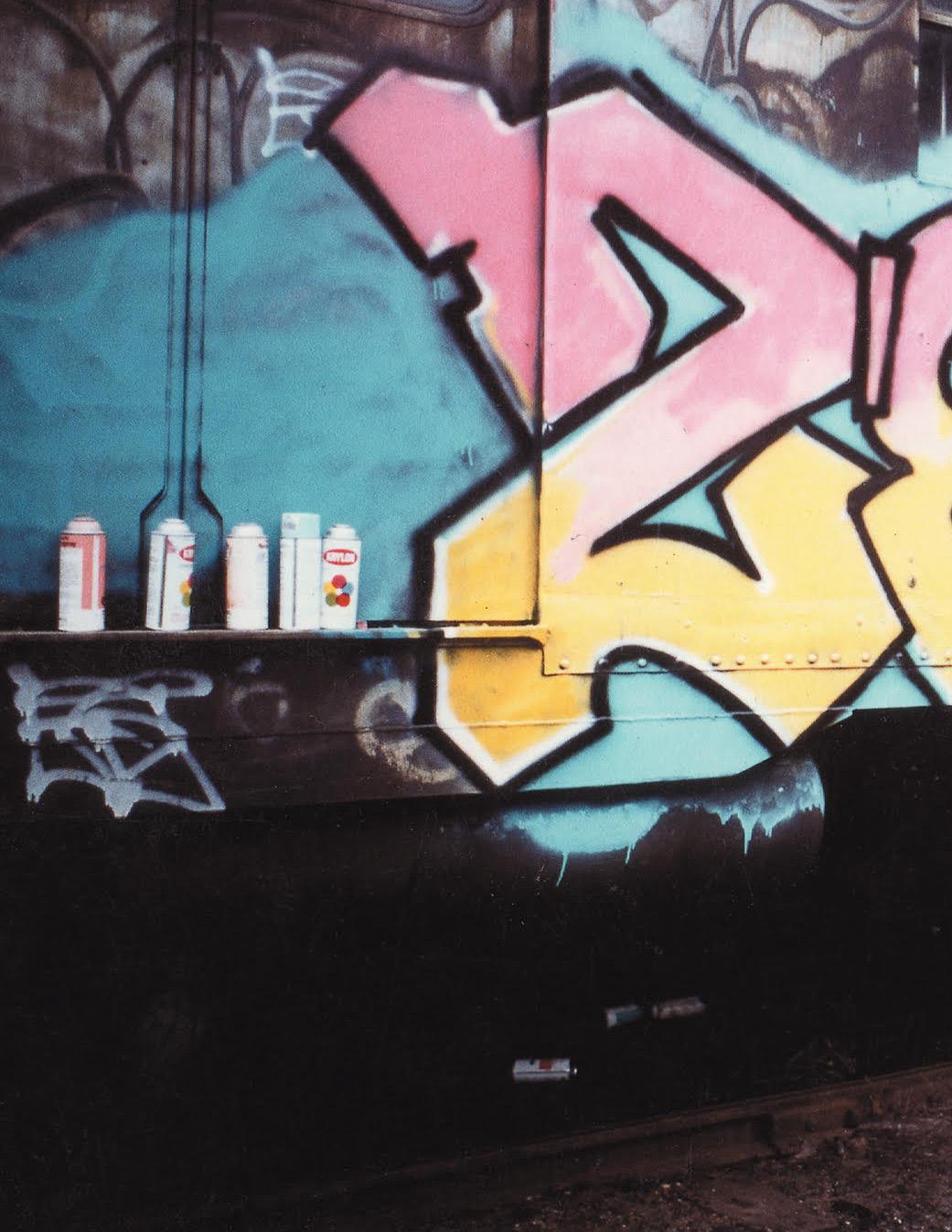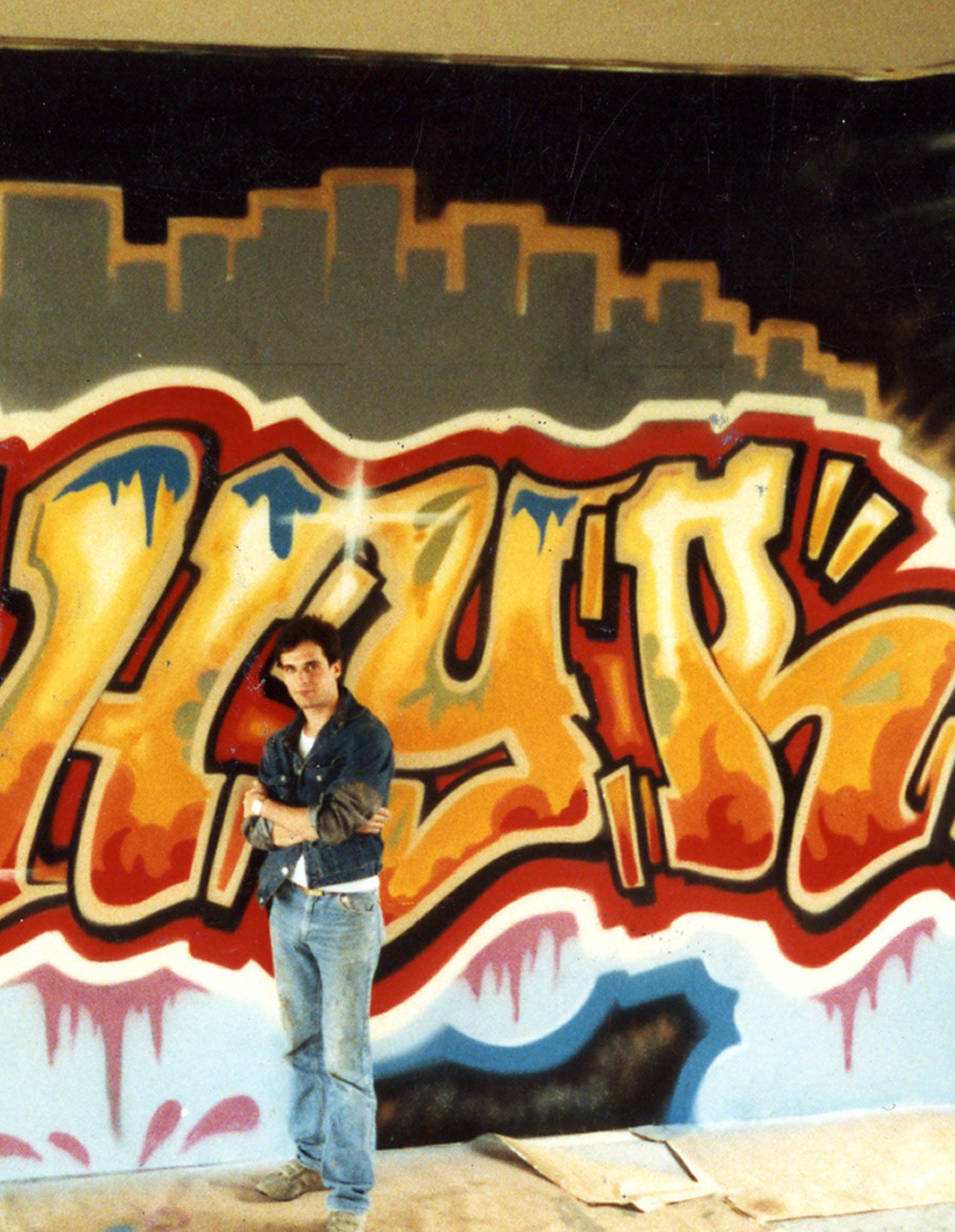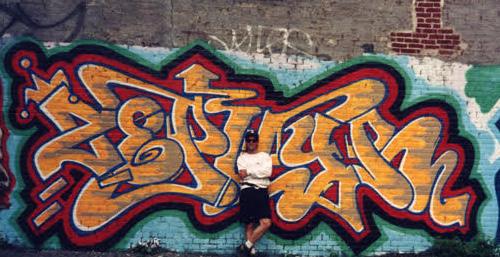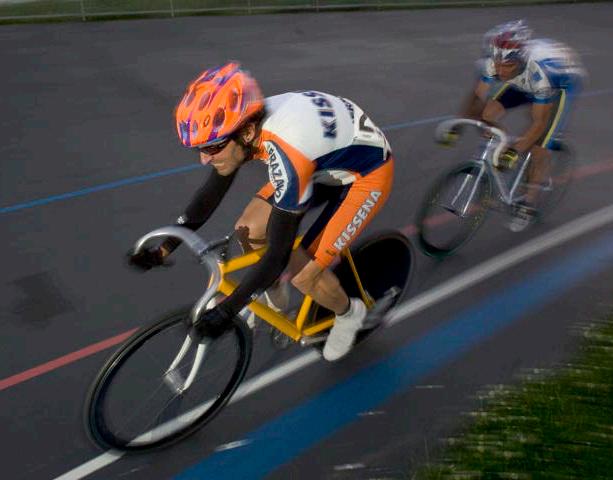
6 minute read
Street Legend
The legendary “Zepyhr” talks with RCM

Advertisement
Andrew Witten, known as Zephyr, is an artist, lecturer, author, the Zephyr of Suzanne Vega’s song, “Zephyr and I” and now an avid cyclist and father.
As a tagger and the head of a famous street art collective, the Rolling Thunder Writers, he was a key component in graffiti artists making the jump from NY City subway cars to galleries such as NY’s FUN gallery and 51X and a show in Japan with fellow artists Futura 2000, Dondi White, Fab Five Freddy and Dominque Philbert; to collectors and commercial work. He, along with his fellow artists, invented styles and standards that prevail today. His work was featured in the documentary “Style Wars” and Charlie Ahearn tapped him to create the title sequence for his landmark film, “Wild Style” in which Zephyr also appeared. He is a serious artist who continues to be a central figure in the street art scene.
When did you start creating art? Like probably 99% of all kids throughout the history of the
Street Legend

planet I began making art in the earliest years of my life. The only difference between me and some other kids is that I never stopped drawing and painting. Unfortunately, modern western society encourages capitalism over creativity so a lot of kids don’t stick with it, as they get older. I still have some of my drawings from age six.
What compelled you to paint in subways? The history of graffiti being presented as fine art first occurred in 1972, when a man named Hugo Martinez exhibited the top New York City subway painters under the banner “United Graffiti Artists” (U.G.A.). Despite a well-received Soho exhibit in 1973, the world didn’t appear quite ready to accept graffiti as high art yet. When it was attempted again in the early 80s by Patti Astor at her Fun Gallery in New York, the reception was very positive, and her tiny ramshackle gallery launched the art careers of Basquiat, Haring and many other greats. Patti was the first gallery owner to give graffiti artists solo exhibitions and it was through her faith in me that
Recently part of Chicago was up in arms as a beloved piece of building art was mistakenly removed in a graffiti “cleanse” This was part of a plan to lure Jeff Bezos and Amazon to bring jobs. Any comment? The image was clearly art - the canvas seems immaterial.
I wasn’t familiar with this situation. I had to look it up on the Internet. As far as the piece on the wall that all the controversy was about, it was done by an “old school” French street artist named “Blek Le Rat”. I confess that street art is not where my attention generally goes. However, I do have a special place in my heart for this artist because he is a real grandfather of the international street art movement. In fact, Banksy has borrowed heavily from him, stylistically. That said this whole situation is a bit of a paradox wrapped in a conundrum. It can get quite complex very quickly if analyzed with any depth. I can’t even begin to express my opinion about it in any real way because doing so would require pages of potentially circular narrative. In a nutshell, the situation is replete with
“We used subway cars as our medium for artistic self-promotion”.

of surfboards and skateboards.ironies and contradictions that Diego Rivera, were not aligned Many of his most popular piec-include subjective standards, who with “society” in the same way we es have been done by simply – if anyone – really owns space were. The difference is huge. As redesigning his trademark name (i.e. “public” vs. “private” space); subway painters, we exploited— “Zeph” or “Zephyr”. the legal “rights” of anyone to or created—a loophole in “property”; and even the propriety the system. We used the subWitten’s influence on New York financial aspects of so-called art. way cars as our medium City’s self-image is exemplified I’ll graciously leave any further for artistic self-promotion. We in Suzanne Vega’s 2007 song discussion about this for another accomplished this by trespassday. “Zephyr and I,” which uses a ing the storage yards at night conversation between Vega and to spray our names on the train Witten as a framing device to What’s the difference between cars. Not only was there public create what Vega describes as the commissioned Mexican hostility toward our doing this, “sort of a little snapshot of what Muralist of the 1920’s and the but there was a perpetually high West End Avenue used to be like work you and your friend were level of physical (and legal) risk and doing? in the 70s.”vulnerability involved. The work we did was never condoned. And The Mexican muralists I assume although in some circles subway you’re referring to, most famously graffiti was celebrated, in our time we were considered a blight at best.

Needless to say, the Mexican muralists were a different story entirely. Since the movement was government sponsored their work wasn’t created in a hostile environment like ours was.
You’re a serious bicycle racer. How did your collaboration with Raleigh to design a bike start? The Raleigh bicycle gig was a perfect situation. I caught my fever for bike racing from my childhood friend, Nelson Vails, the Olympic Silver Medalist. Nelson grew up in Manhattan and long before he discovered cycling we were skateboard partners. When he won the Silver Medal in Los Angeles for cycling in ’84 he did it aboard a Raleigh. Decades later Raleigh produced a tribute bike and Nelson thought I’d be the right artist for the job. He’s a great guy and Raleigh makes great bikes, so it’s a win-win.

You provided art for the movie “Wild Style”. Did you enjoy working in an art department? As for doing the artwork for the narrative film “Wild Style” (1982), it was an amazing experience and an amazing time for everyone who collaborated with Charlie Ahearn on the film. The movie captured the birth of Hip-Hop before it was even formally dubbed Hip-Hop.
The film was created without any budget to speak of and filmed primarily in the South Bronx after that region burned to the ground. It captures a New York City in the throes of real collapse, although coming of age at that time was extraordinary because the level and intensity of the creative energy that flowed in that period is beyond explanation or even description.
Has fatherhood changed you? Yes. I choose graffiti opportunities carefully now-thoughtfully weighing risk versus reward might be the best way to put it. I really don’t want my daughter to see me through plexiglass while I’m in an orange jumpsuit. That’s just not a good look.
Are you painting the walls of your new house with anything special? The walls are white, but I’m fortunate to have amassed a great art collection over the decades. We try and rotate the art to keep things fresh.
People probably are surprised to see the traditional way I live with regard to the art I display in my home, although I try to throw in a surprise sometimes with a vintage Rick Griffin Grateful Dead or Quicksilver poster. I had a metal smith in California named “Metal Man Ed” buuld me a fake subway car. It’s made from aluminum and it’s in eight foot panels that connect. I

haven’t had the heart to paint it yet. He did such a beautiful job. It seems a shame to slap my crazy graffitti stuff all over his nice silver and blue paint scheme.







